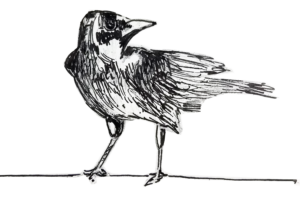
I’ve been friendly with a mated crow couple for about 7 or 8 years. Always in the front of my house, and definitely because I feed them. On Threads, I always get thousands of likes on posts about crows, and I know a lot of people want to make friends with crows but aren’t sure how. If that’s you, this post is for you!

How to start feeding crows
The number one key is—bear with me here—to say hi to them. They will pay attention. Then follow this up with putting food down. Make sure they see you put the food down.
Food to use:
- Peanuts, in or out of the shell
- Dry cat or dog food
- Higher quality food (actual meat) will get you better results, but that’s a lot to ask
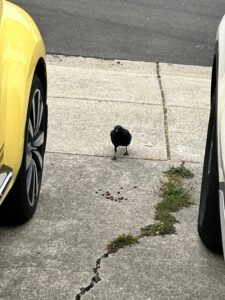 The crows will watch warily to make sure there are no traps. They will probably wait until you’re gone to come and get the food. Or they might wait a day to see if you’re really going to give them food. Be consistent. It won’t take them long to figure out that you’re offering food regularly.
The crows will watch warily to make sure there are no traps. They will probably wait until you’re gone to come and get the food. Or they might wait a day to see if you’re really going to give them food. Be consistent. It won’t take them long to figure out that you’re offering food regularly.
In my case, the initial crow’s mate soon joined it. The two crows did not tell their friends about this; they preferred to keep this food source to themselves. Eight years on and they are still keeping it a secret for the most part. They tell their babies about it. They’ve had 5 or 6 babies over the years (usually once per season), and they teach the babies that our house is a trusted food source.
The way I knew we were trusted was when the parents began using our driveway as a safe place to teach their fledglings to fly properly. Apparently when the baby leaves the nest for the first time, they still need to gain flying skills and they do this by flying short distances while the parents look on. They’ve used our steps and out sideyard for this.
Interesting observations
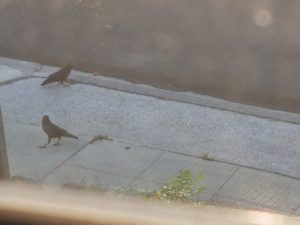
Over the years, I’ve noticed:
- One of the crows cawed very loudly over my head on a wire as I was walking the dog one morning, warning me that there was a coyote across the street. It was really nice.
- About 2 or 3 years into feeding them without the pair totally trusting me to get close, their baby crow decided to let me get close while it was on the ground getting food (probably it didn’t know better). Because I didn’t trap it or lunge at it, the baby was cool with me and it showed its parents that I won’t do that. Ever since then, the parents have been much more trusting. I thought it was interesting that they needed to be shown this.
- I am never allowed to get too close when they fly down to get food, but they will tolerate me getting within a few steps.
- The crows regularly follow me home, flying from telephone wire to telephone wire if I am walking the dog around the block. Like my own personal escort.
- The crows appear to have boundary systems. They will never cross certain lines over blocks. As I walk the dog, they’ll go to a line and not fly further. I find this fascinating.
- Feeding these crows DOES mean that other birds seen as threats are chased out, which is too bad. A great horned owl often stays in the big pine tree next door and it is regularly harassed out by these crows. Similarly, if any young hawks from the nearby open space come up the street, they’re chased out. (Again, within the boundaries.)
- A blue jay often comes to join the handout. Like crows, blue jays are corvids and they’re VERY intelligent. They’re also 10x more aggressive and daring. They will steal food away from the crows, and the crows don’t do too much about it unless the blue jay is slow about it.
- The parent crows eat first before the babies. Always.
Other stuff
- Here’s a link to the PBS Nature documentary that goes into how intelligent crows are. Well worth your time.
- “Crows are smarter than you think” Science & Nature documentary
I hope this helps with your attempts to make friends with crows!
If you liked this, consider joining my newsletter, in which I talk about crows, books, book news, writing and publishing, and other interesting things. Join here ⬇️
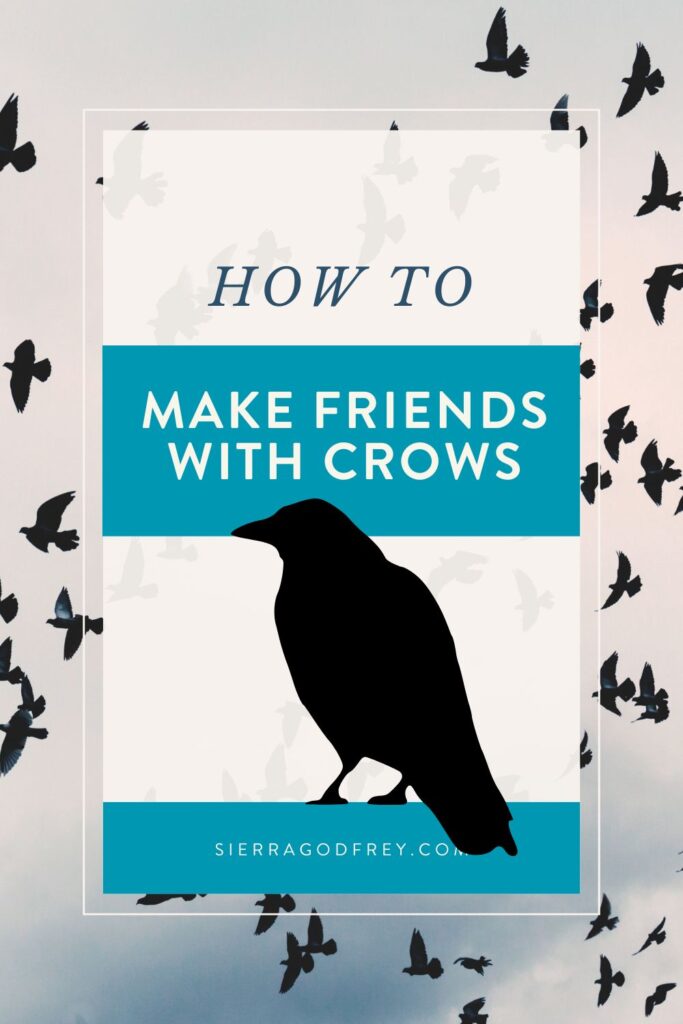

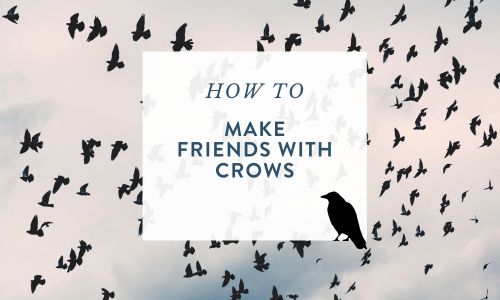
This is so cool!! I was helping with an exhibition recently all about crows — the hawaiian and new caledonian crows are so intelligent they can craft their own tools! Super cool!